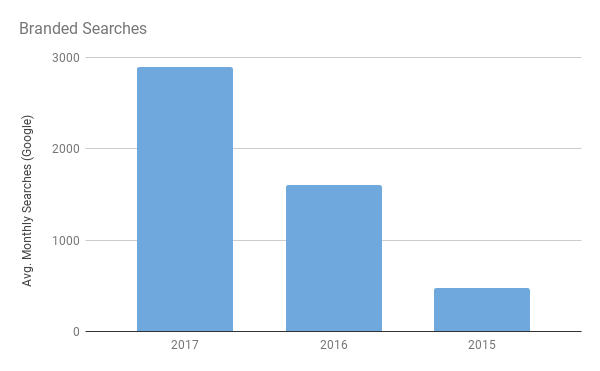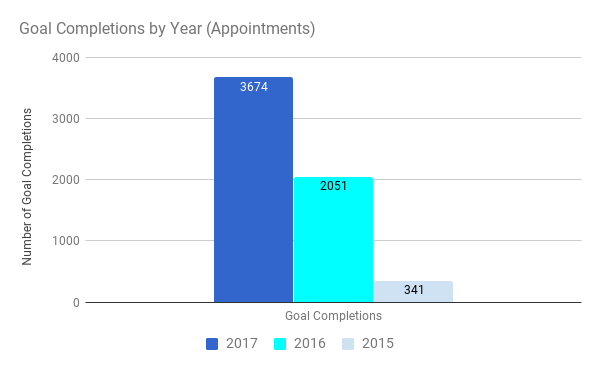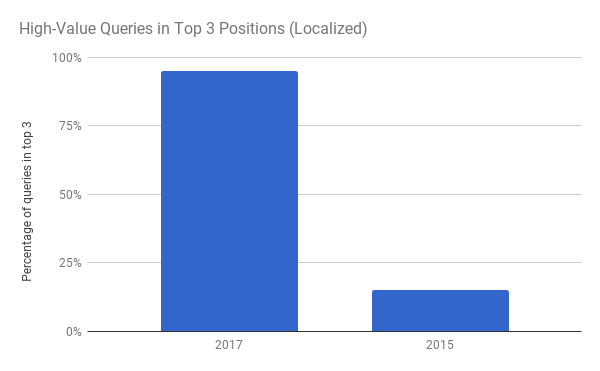Objective:
While previously seen as an offline only industry, consumers are increasingly turning to the web to learn more about healthcare treatment options, reputation of the facilities, as well as information about their perceived ailment, in an attempt to self-diagnose. The onset of informational sites such as WebMD, EverydayHealth, as well as the further development of Wikipedia and Mayo Clinic’s information portal has brought an endless supply of healthcare related information to consumer’s fingertips.
With an increasingly discerning and informed consumer turning to a variety of mediums to choose their healthcare provider, our client came to us with a significant challenge; increase patient count, brand reputation, and ultimately launch them into two new markets. The incumbent competition in these markets were heavily funded, part of larger networks, and had a wider breadth of offering. Our client was specialized, had fewer locations, but owned an expertise unrivaled by their competitors, with a specific specialty.
With an exclusively offline ‘conversion’ and patient experience, our strategy needed to cross a variety of verticals, with a unified and omnichannel message, to maximize the effectiveness of our exposure.
Overall, our goal with an SEO campaign was to ensure they were present for high intent localized queries, improve rankings for those queries within the geographic markets in which they have a location, improve entrances from organic search, but ultimately generate more appointments, patient visits, and awareness amongst their regional target audience. Our client wanted to ensure that when someone thought of their specialty, they were considered the ‘best-in-class’ provider.
Strategy:
With a conversion that happens offline, we needed to take advantage of consumers within the research phase of their journey, as well as be present for localized queries with ‘action’ intent (meaning they are going to go to that facility).
Since our client primarily spoke to a specific demographic, we completely took apart the consumer journey, qualified opportunities within each of those segments, and then mapped interactions with digital and offline mediums to develop a strategy that maximizes touchpoints with a unified and consistent message. This reassembly of the consumer journey, related to their specific audience, led us to a point where we wanted to expand their reach to almost the opposite of their previous target, towards the female head of household, known for making the health related decisions for all family members.
Since this audience was generally unaware of our client’s offerings, this was initially an education mission. We needed to educate the new target audience why our client was the already known leader in their specific discipline. From there, we worked to activate that awareness into appointment setting and patient acquisition.
From an SEO standpoint, our strategy of education first allowed us to utilize their robust health library to prepare specific pieces, focusing on issues commonly found amongst those who the target audience is responsible for making healthcare decisions, such as their children.
Congruently, we worked to build out a robust Local SEO campaign for all of their locations, ensuring a consistent naming convention, a robust portfolio of high-value citations, as well as cleaning up duplicate, incorrect, and non-relevant listings. This effort was quite the robust initiative given the uniqueness of their specialty, the extremely competitive landscape, as well as limited geographic spread their locations could service.
While we were focusing on education consumers with regular on-site content and building out a strong Local SEO presence, we also worked to obtain placement and earn awareness through a locally focused Online PR campaign. Ensuring that their doctors are featured, their initiatives highlighted, and their brand associated with unrivaled expertise locally, was a priority for building brand awareness.
Results:
When we first took the campaign over from a heavily traditional marketing plan (which consisted of mostly offline media buys), we found a great deal of work to embark upon to bring them up to the level of their mature, heavily funded competitors.
Within the first 9 months of the campaign, we were successful in earning top ranking locally (within the Local Pack) for 95% of their target queries. This increased visibility parlayed into an increase of Organic traffic by 31%, when compared to prior year, with an increase in total number of users by 21%.



Case Study Highlights
Industry: Healthcare
Goals:
- Increase Patient Count
- Increase Brand Reputation
- Launch Into Two New Markets
Results:
- Earned top ranking locally (within the Local Pack) for 95% of their target queries.
- Increase of Organic traffic by 31%
- Increase in total number of users by 21%
